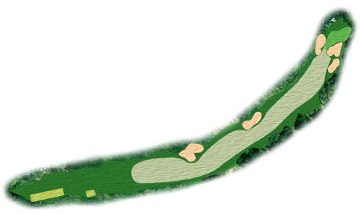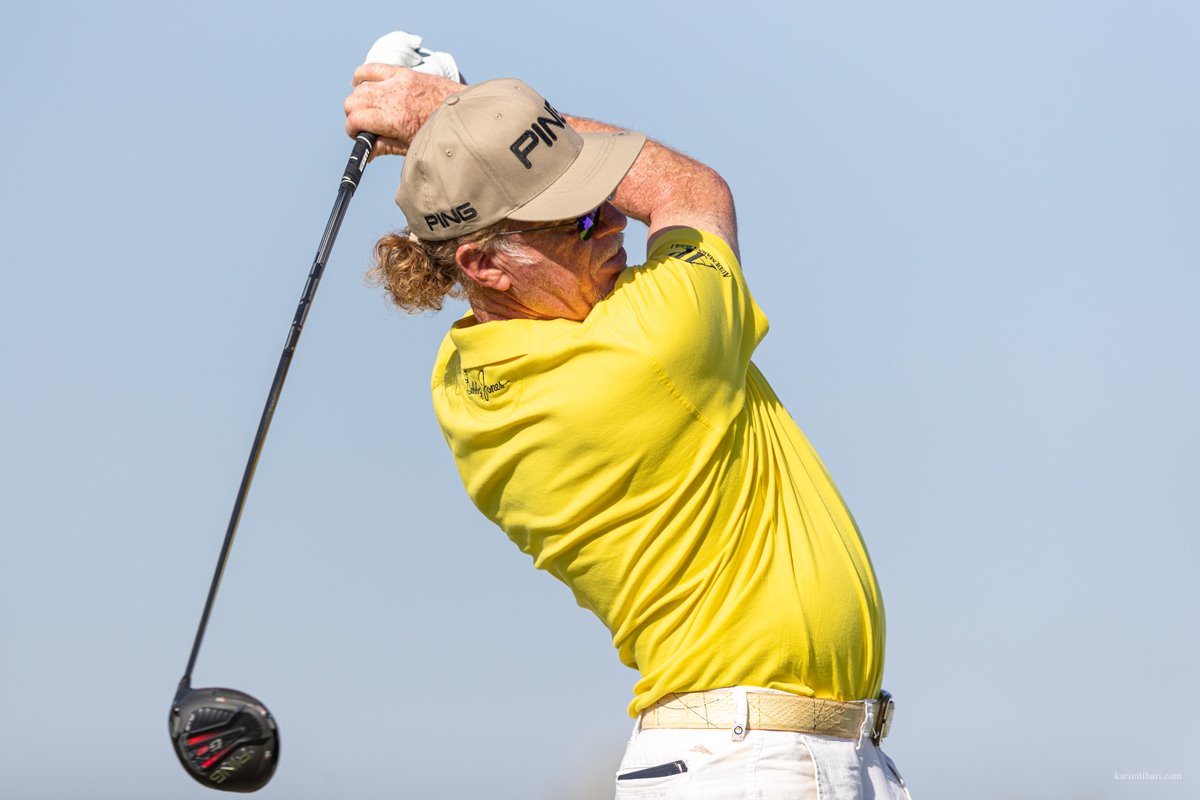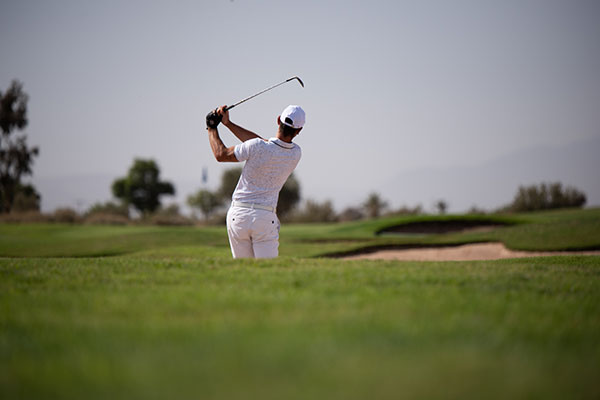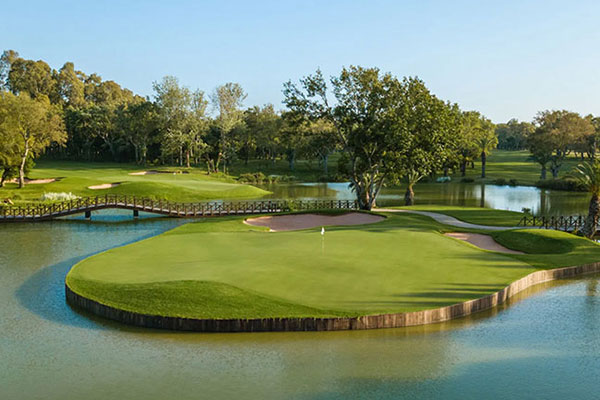
Red Course
History of
greens on islands!
Hole 9, a par 3 at the island green, is the signature hole of Royal Golf Dar Es Salaam Red Course. This is an opportunity to know more about a hole that is like no other.
Each golf course has its signature hole. Whether from the esthetical or golfing viewpoint, this “signature” marks forever the memory of players and photographers’ lenses. On the Red Course, the 9 has always been the most renowned hole of the Royal Golf Dar Es Salam. This par 3 of 180 meters of backtees has a green that is surrounded by water and water lilies.
A beautiful wooden bridge borders it at the water surface and leads to its left side. On this kind of par 3, making par or better requires hitting the right club at the right distance by flying the ball to the green. There is no room for error. Each year, at the opening of the Hassan II Trophy, a mixed exhibition pitting the headliners of the Hassan II Trophy and the Lalla Meryem Cup against one another on that particular hole is organized. On one of these occasions, the Frenchman Alexander Levy, winner of the Hassan II Trophy 2018, managed a hole-in-one!
The Red Course’s first occurrence in golf history of architecture dates back to Baltusrol, a major American club that hosted many major tournaments. It was in 1904, a few months before the arrival of the US amateur that the first green on an island was created on a 300-meter par 4. This innovation caused some turmoil within this very select New Jersey club. As the Brooklyn Daily Eagle summed it up in its August 12, 1904 issue: “The new and unique island green on the 10th hole at Baltusrol is going to be a source of trouble for players”. In fact, three members tested and deemed it too tough. A few years later, this hole adopted a more conventional design.
Later, the idea grew in the minds of other architects: A.W. Tillinghast implemented it at the Shackamaxon Country Club and the Galen Hall Golf Club during the First World War. In 1932, when converted in architecture, pro Herbert Bertram Strong created his own at the Ponte Vedra Club, Florida. Later, Pete and Alice Dye drew upon it in 1980 and created the most famous island green on the planet: the 17th of the TPC Sawgrass, the yearly host of The Players. This hole of nearly 120 meters has become the terror of all players, including pros. Every year, divers extract more than 100,000 balls from underwater!
Dating back to 1971, Royal Golf Dar Es Salam Red Course’s hole 9 in fact existed before the Dyes’ proposed challenge. Besides, Robert Trent Jones Sr. was familiar with this kind of greens since the late 30s, his first draft dating back to the 1939 creation of the Pottawatomie Golf Course, in the United States. Moreover, if for the pros, this par 3 is not the most difficult of the pros’ courses, it still is spectacular enough that everyone dreams of tackling it club in hand one day. Incidentally, during the tournament, spectators would swarm the magnificent wooden bridge in order to be as close as possible to the show.
- 1
- 2
- 3
- 4
- 5
- 6
- 7
- 8
- 9
- 10
- 11
- 12
- 13
- 14
- 15
- 16
- 17
- 18
Hole #1
PAR 4 – HDC 10 – 388m
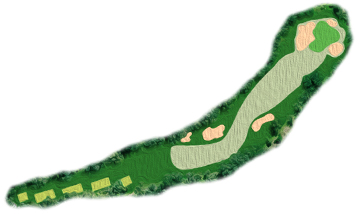
Hole #2
PAR 3 – HDC 7 – 208 m
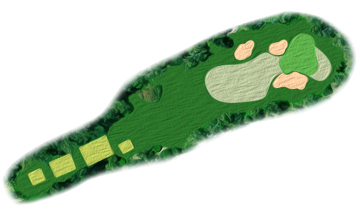
Hole #3
PAR 4 – HDC 2 – 433 m
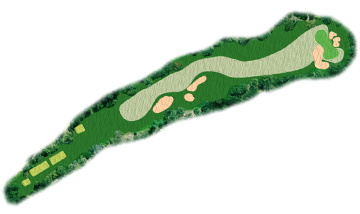
Hole #4
PAR 4 – HDC 6 – 399 m

Hole #5
PAR 5 – HDC 15 – 547 m

Hole #6
PAR 4 – HDC 4 – 417 m

Hole #7
PAR 4 – HDC 8 – 401 m

Trou #8
PAR 5 – HDC 17 – 528 m

Hole #9
PAR 3 – HDC 14 – 180 m

Hole #10
PAR 4 – HDC 1 – 430 m

Hole #11
PAR 4 – HDC 3 – 427 m

Hole #12
PAR 5 – HDC 16 – 518 m

Hole #13
PAR 4 – HDC 11 – 364 m

Hole #14
PAR 3 – HDC 9 – 167 m

Hole #15
PAR 4 – HDC 12 – 358 m
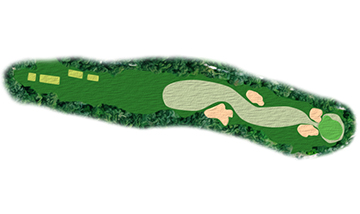
Hole #16
PAR 4 – HDC 5 – 414 m

Hole #17
PAR 4 – HDC 18 – 262 m
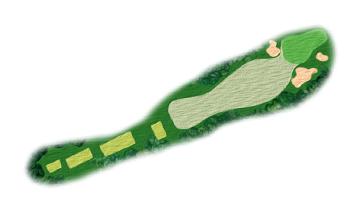
Hole #18
PAR 5 – HDC 13 – 530 m
